


I then added texture for the collage by using red tape to create a red boarder the the second image. I also used a red marker pen to draw around where I cut out the image of the mannequin to add a sense or shadowing.





I then added texture for the collage by using red tape to create a red boarder the the second image. I also used a red marker pen to draw around where I cut out the image of the mannequin to add a sense or shadowing.


Mary Ellen Bartley is an American photographer famous for her creativity and ingenuity when it comes to her ability to photograph ordinary objects. Her project ‘7 Things Again and Again‘ is a prime example of this.
This project arose from Bartley’s desire to not allow her photography to stagnate as a result of the limitations that the Covid-19 lockdown placed her under. She chose 7 random objects from her household which in themselves, would have made for quite boring compositions, but because of Bartley’s intention to photograph them over and over, she was required to change the arrangement of the objects every time – and the results demonstrate clearly her ability to orchestrate her vision.

Later on in the project, she moved to more tactile elements, involving her printing her previous photos before retaking, using lighting to create various interesting effects.
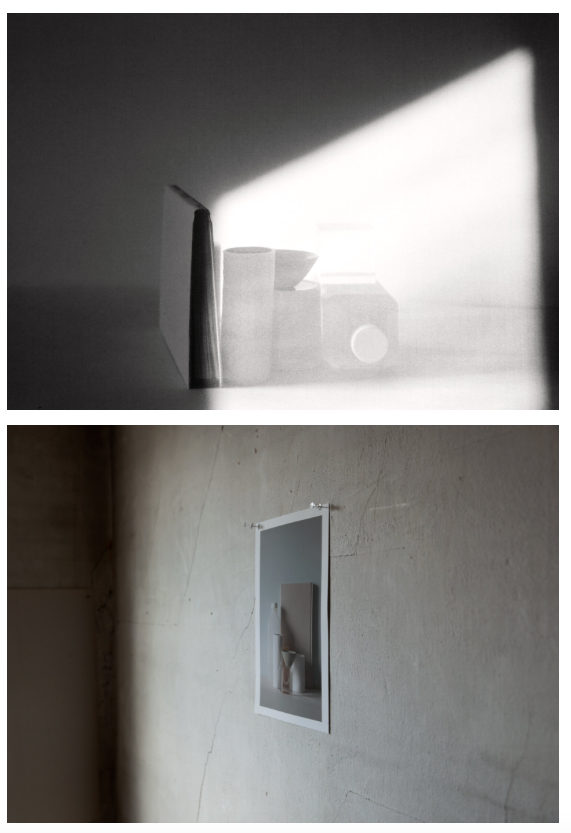
Here are some of the methods used and examples of them –






My Response
These images are the sum of 2 photoshoots – as the first ones I thought were not good enough so I reattempted.

I think some of these are quite good, but the first set were definitely rushed with not much forethought and this is evident. The second set are really the only ones that respond clearly to the artist’s work.
Here are my edits –

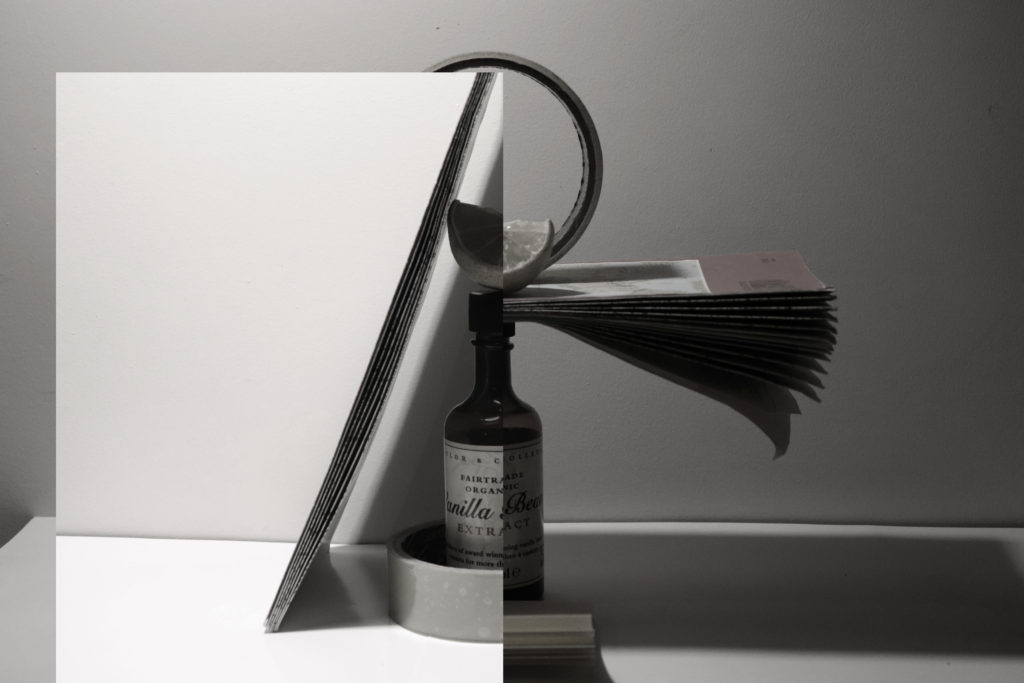
Below are some manual edits I created using some of the above techniques –



Mary Ellen Bartley is known for her photographs exploring the tactile and formal qualities of the printed book, and its potential for abstraction.
Bartleys photo shoot was during covid after she had to get the last flight back to New York after being in Italy. Her photos consisted of every day household objects which she changed the position of every day.








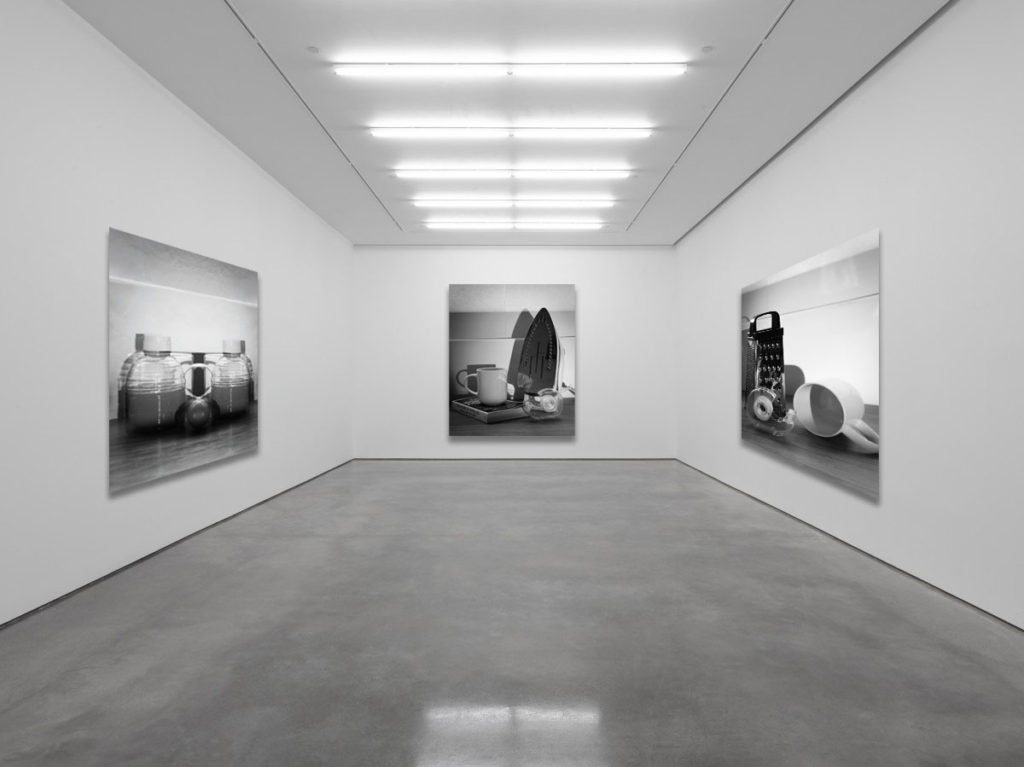

On the internet I searched for white gallery space. I picked this photo.
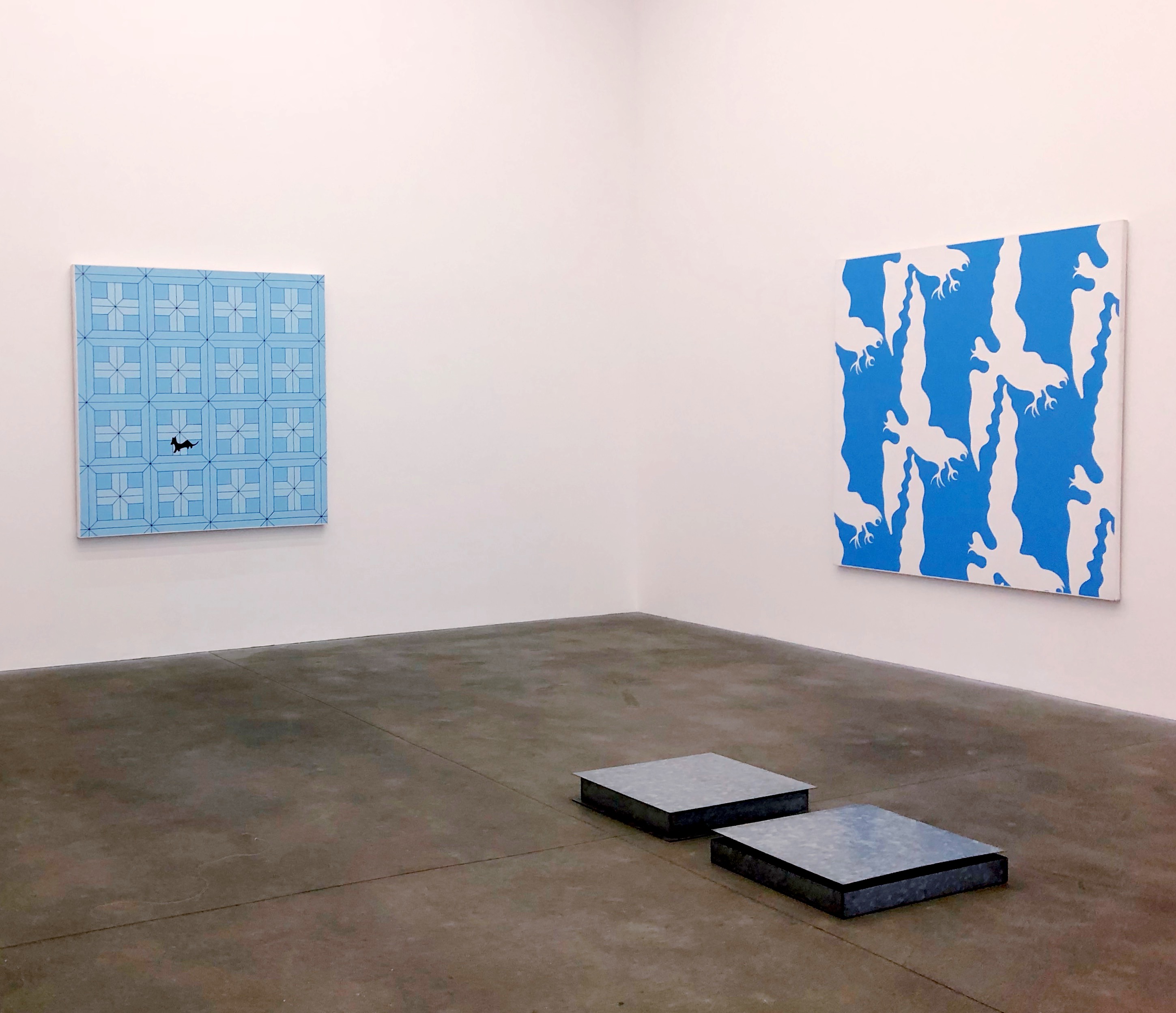
Then I chose 2 images and then I edited them using the free transform skew edit. Then I put them into this space.

This is the final product.

A Gallery of all my final images (the first image shows my interpretation of Anthropocene inspired by the works of Dafna Talmor and Mandy Barker / the second shows my images of rural and urban landscapes in jersey, exploring the colourful side of nature versus the monochromatic rigidness of human society and buildings)
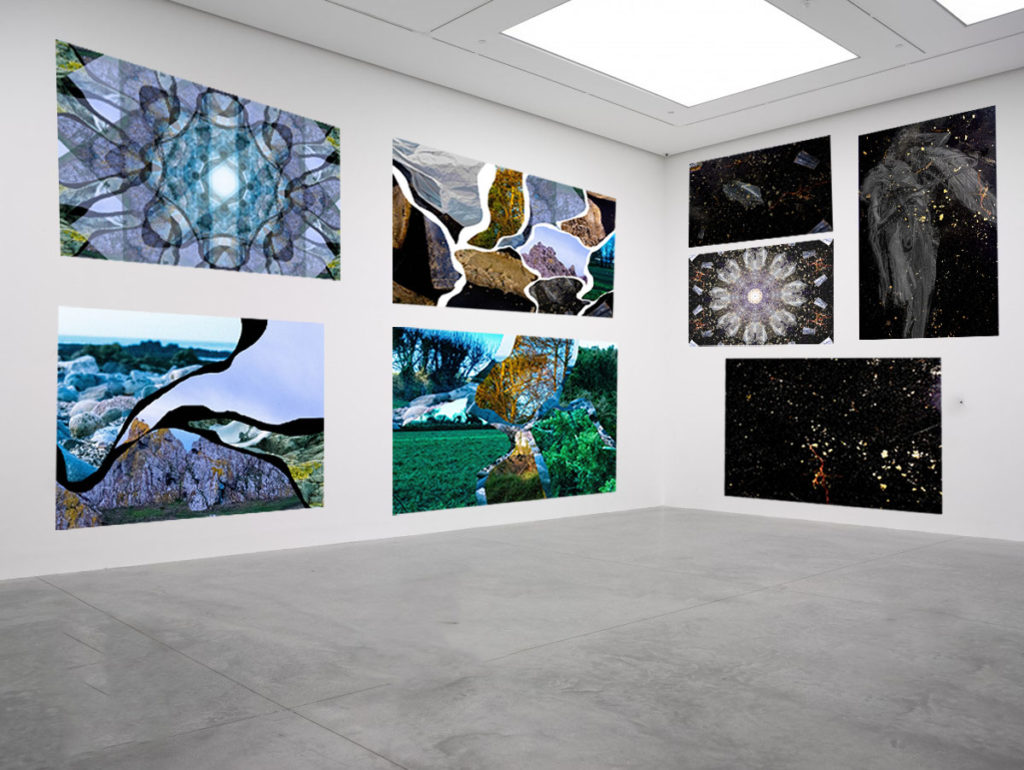
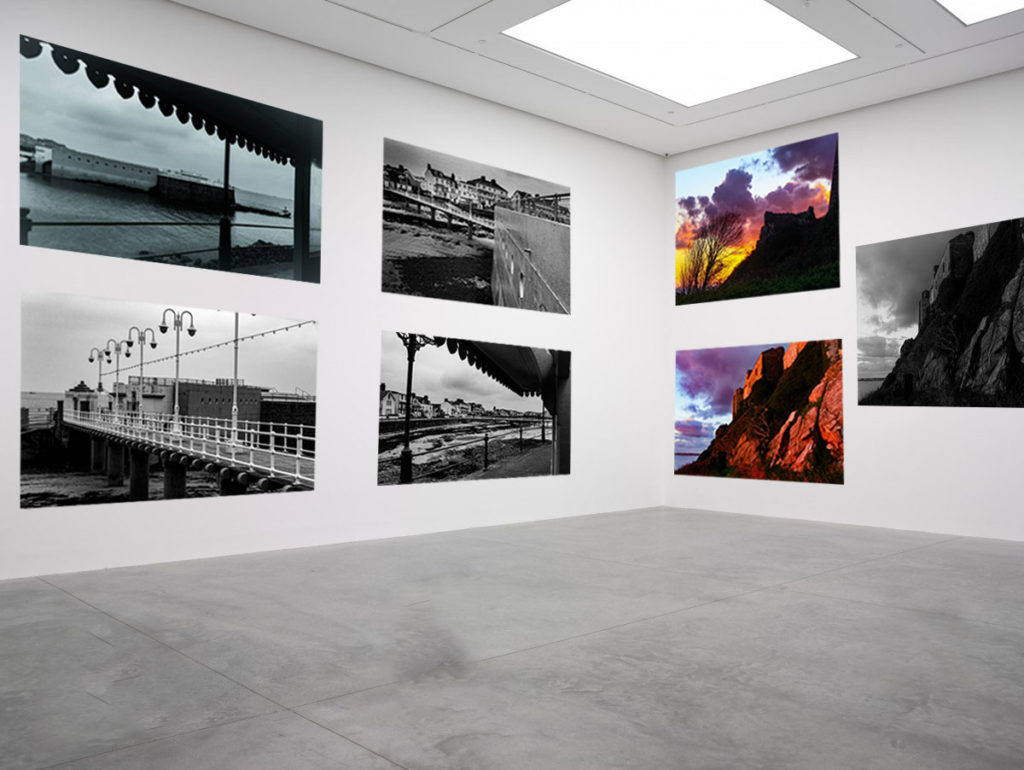
The edits shown are all monochrome images inspired by the works of Group f/64 members, a group well-known for their black and white images showing the relationships between urban and natural landscapes found across the world.


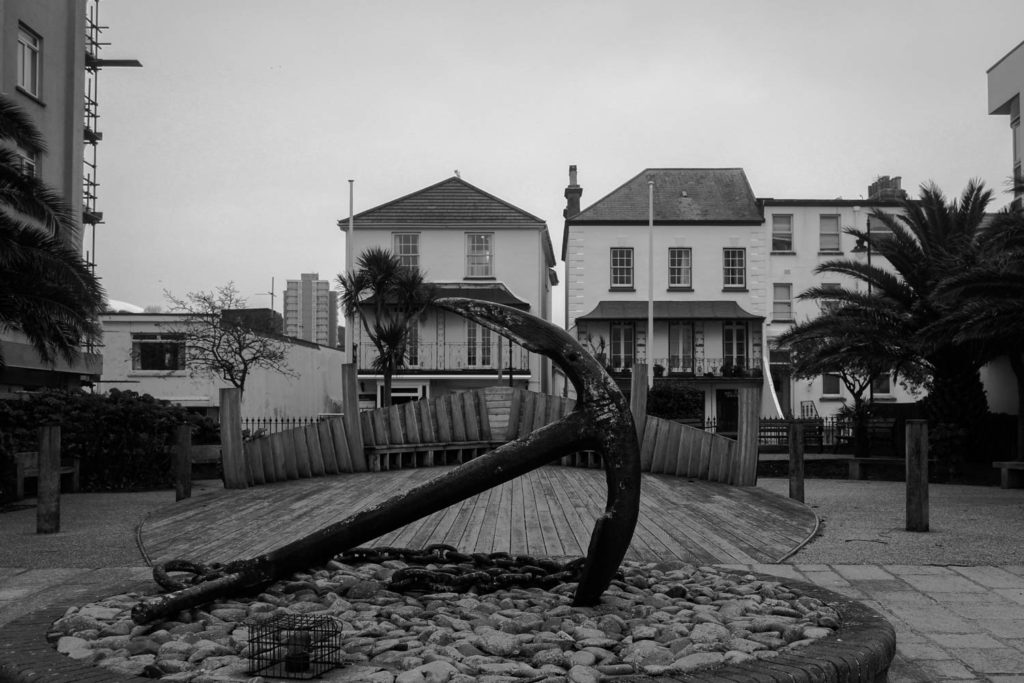
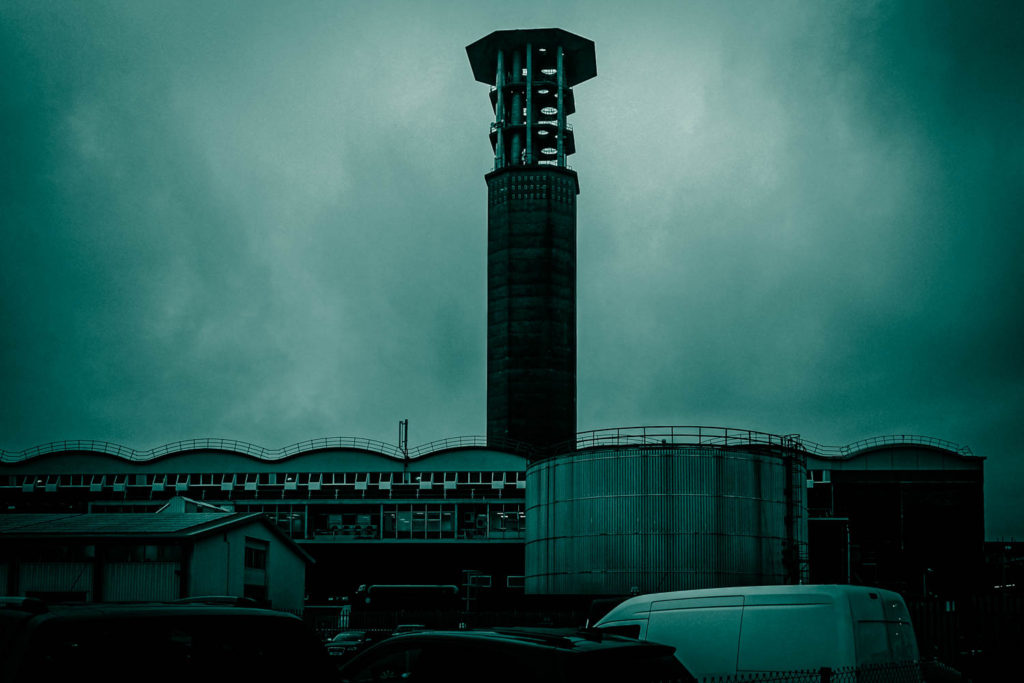



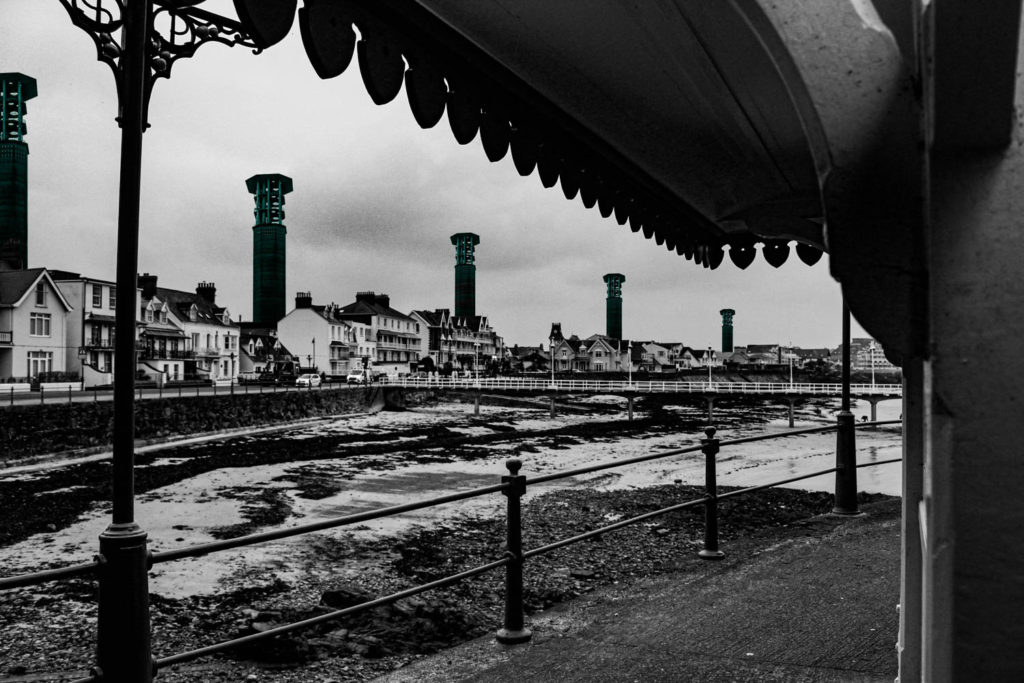
This image of the entirety of Havre des Pas is framed to show the buildings in the area from the cover of an old seating area. I believe this monochrome effect that utilises the dark grey clouds in the sky creates this sense of viewing from safe place. In the past, the area was an old ship yard and was the home of many factories and dry docks for building the shipping that kept Jersey alive. I therefore used two images, the base being of the area and the second being of a large funnel situated on the opposite side of the hill (behind the photographer). I used photoshop to revert this residential area back to the industrial landscape that it once was. The physical lines of each of the fences and the shapes of the houses add to this historical landscape and coupled with the monochrome colour palette strengthens this idea.
The typology that I have chosen to photograph is bunkers from the Nazi Occupation of Jersey. I plan to walk the bays of St Ouen and St Aubin taking photos of the fortifications created by the Nazis as I go along. I have chosen to do this on Thursday 29th December. the weather is forecast to be overcast with short spells of rain, therefore I believe that this will be the perfect conditions to photograph this huge aspect of history. I plan to walk the length of St Ouen’s bay starting at L’Etacq and finishing at La Pulente. Inspired by the images taken by Bernd and Hilla Becher, I wish to take the images in monochrome, imitating the style shown in their images.

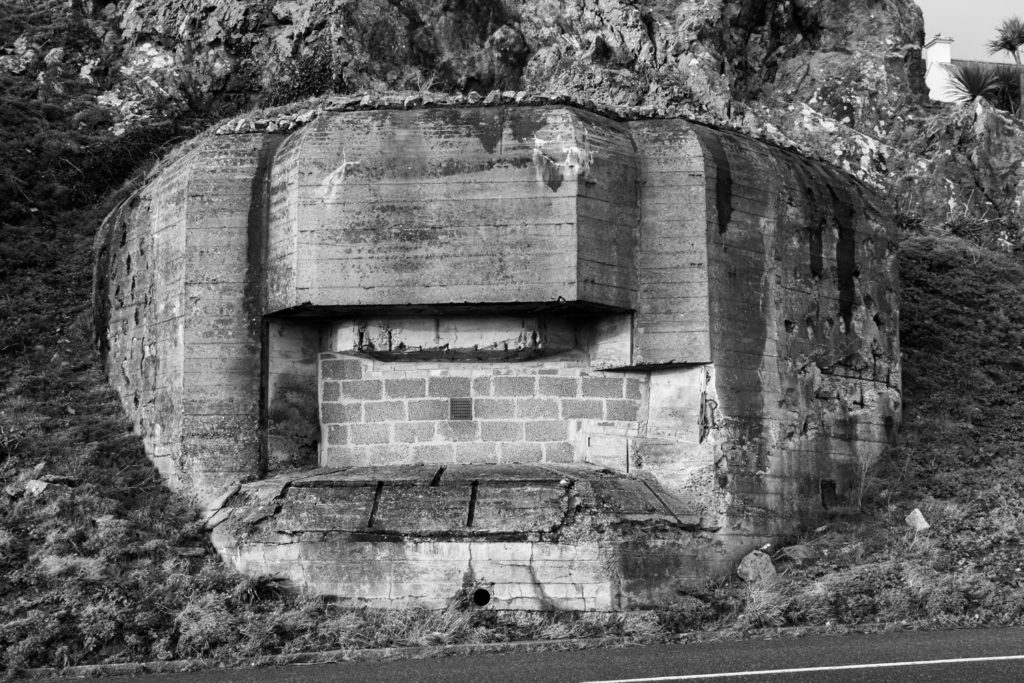


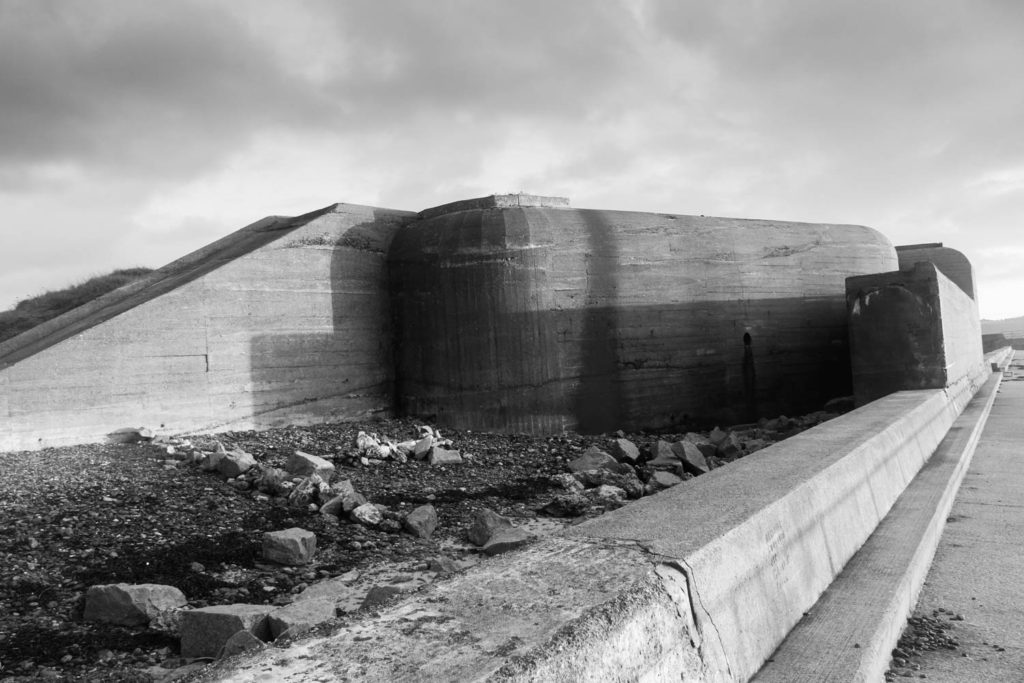

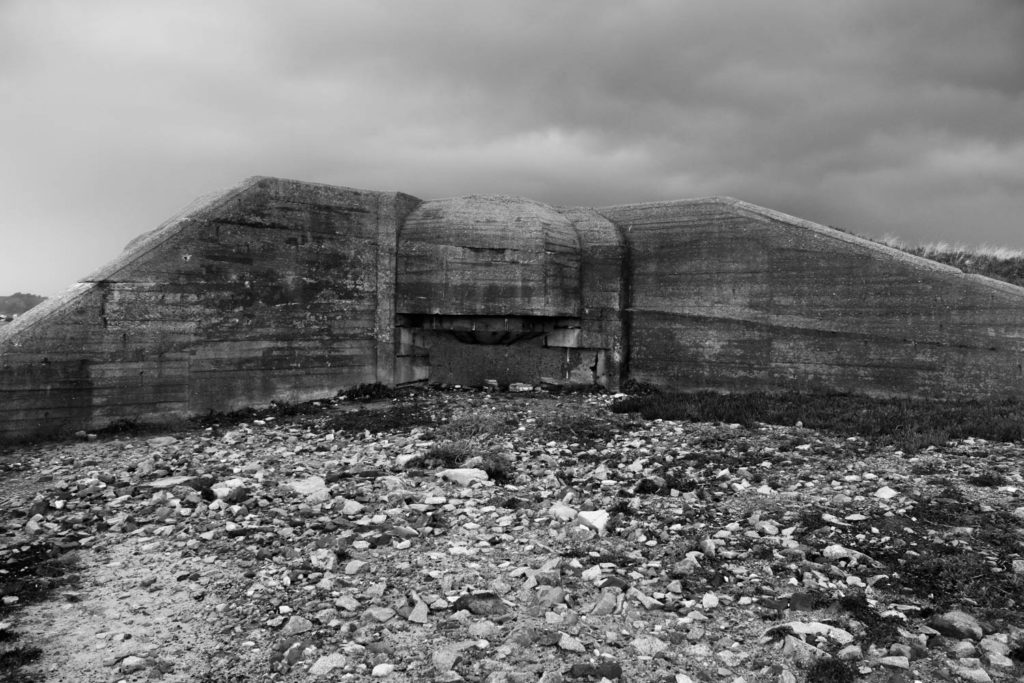
When taking these images, I imitated the techniques used by Bernd and Hiller Becher. Each image was taken in monochrome with a dead-pan approach with an overcast background in an attempt to keep all images as similar as possible. When it came to editing the images, I changed as little as possible (mainly adapting the exposure and contrast elements of the images). As they did not have any modern editing software, the Becher’s would have had to make do with the images that they had captured. Therefore, I did very little editing with the images I had taken and mainly used the bracketing technique to ensure I had at least one correctly exposed image. The monochrome palette shown also allows me to use inspiration from Ansel Adams and the New Topographics by using their zonal systems to ensure that my images had a dynamic range of light and shade. This is more prominent in my first, fifth and sixth images and could probably have been better utilised within the rest.
“The question ‘is this a work of art or not?’ is not very interesting for us.”
~ Bernd and Hilla Becher
These German artists changed the course of late 20th Century photography. They explored the disappearing industrial infrastructure that shaped the modern world, describing their photographic approach as ‘typologies’. By photographing each structure in the same way (same camera settings, same lighting conditions, same angles) they established an interesting way of comparing these images when presented together.
The outcomes that the couple create often focus around abandoned industrial structures but the series that appealed to me was the one shown below titled ‘Framework House’. The shapes created within the walls are interesting and almost create a pattern that connects each image of a different house with the way that they were built.


Upon first sight, the lines within the image are a series of horizontal, vertical and diagonal beams that produce the framework of the house. There is a clear use of depth of field that blurs the areas behind the house but brings the house itself and what is in the foreground into focus; making the house the main part of the image and the first thing that the audience sees. The image displays a very monochrome colour palette but using fairly light tones so that the plain background is only separated from the house by the deeply contrasting beams framing the building. The building is centred in the image and the natural lighting used allows the dulling of the final outcome in post production.
Like I said earlier, the image has some historical importance and makes me imagine the complexity that it possibly took to build. These traditional buildings are scattered across Germany and are not as common as the used to be, allowing a beautiful contrast when looking upon a landscape. it is for this reasoning that I believe the Becher’s created this typology study of this type of building. An aspect of history that has not yet been lost and so they surely wanted to preserve these monuments to the past in their photographic images.
These are the best edits from my first Landscape Photoshoot focusing on the coastlines and and cliffs of Jersey
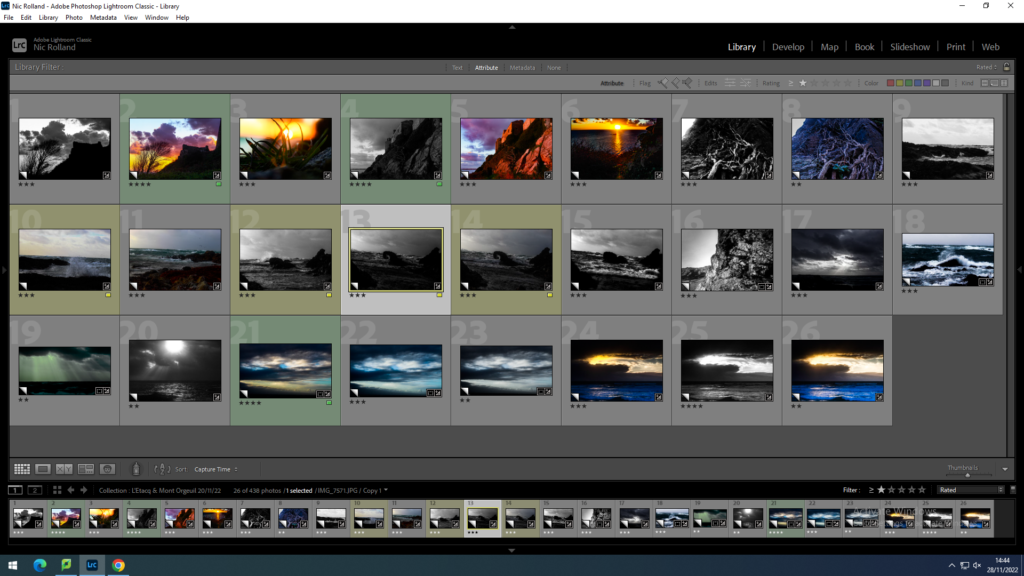


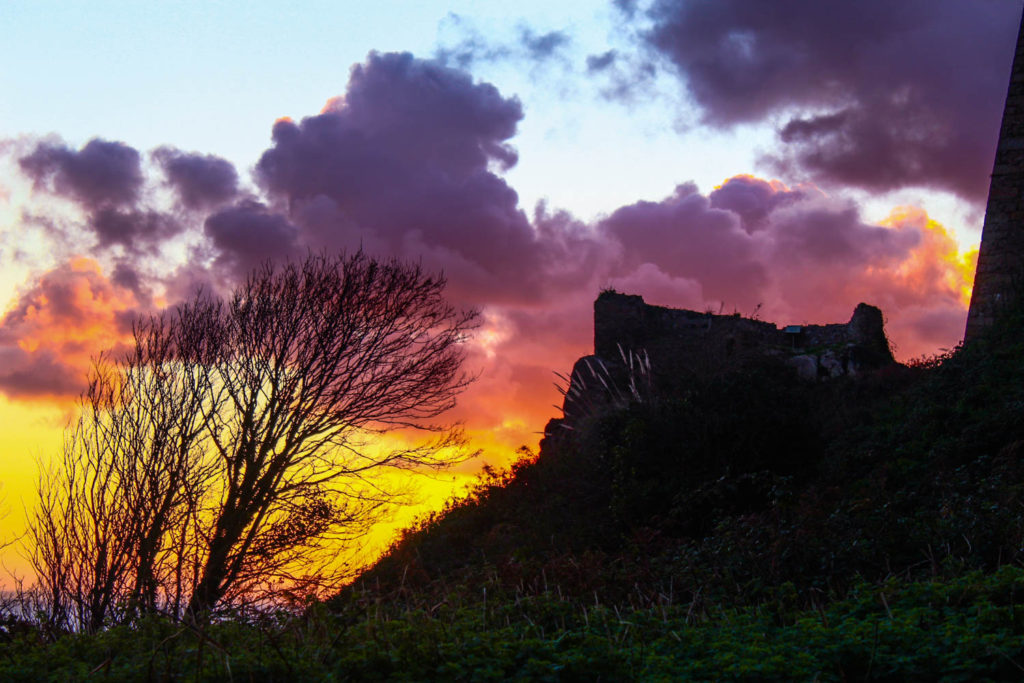

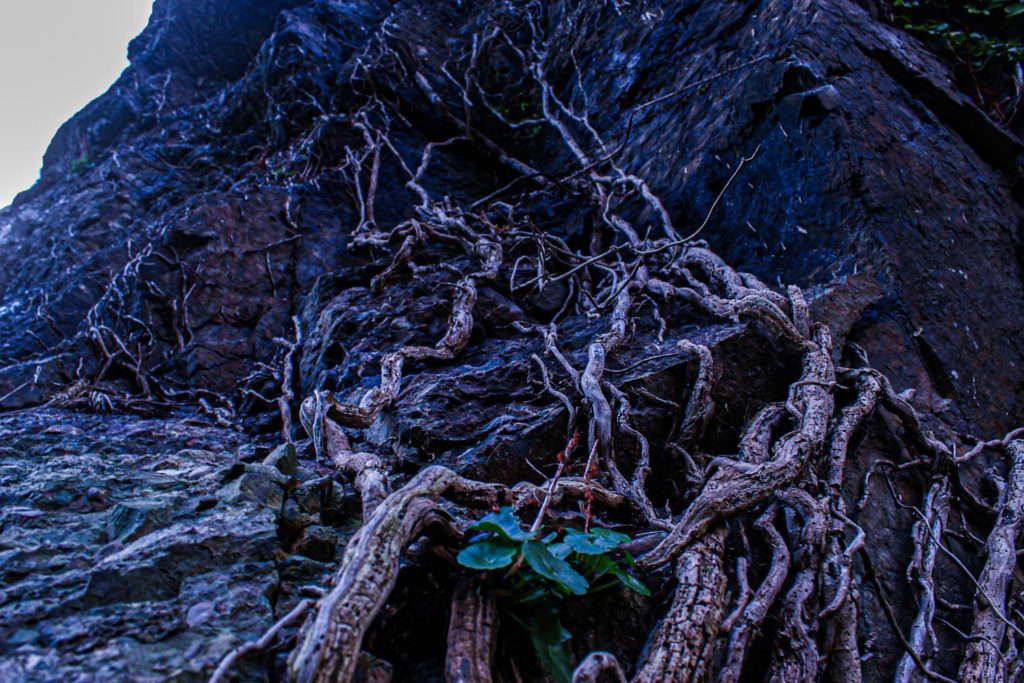


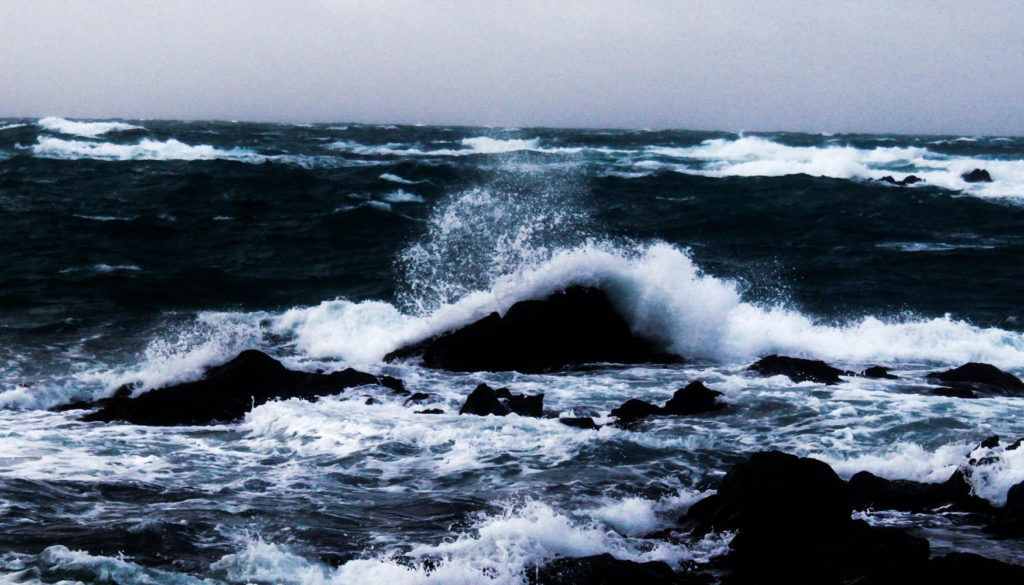


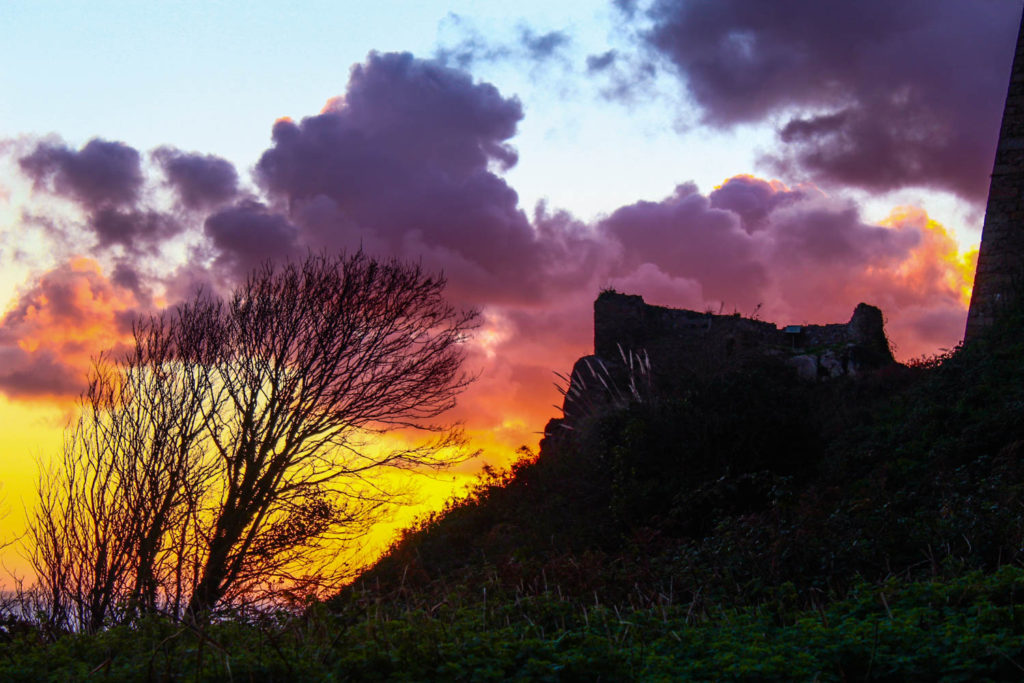
My favourite image is “Sunrise at Jersey”, which uses a multitude of colours, an unperceived array of shades not usually associated with a sunrise. The photo contains the typical yellows and oranges, but then the large clouds in the background almost absorb those colours and make the blues and purples shown, creating this dark dramatic object stand out amongst the bright glow of the sun. The foreground breaks up the image a little bit by creating a slight silhouette closer to the bright, fiery aspects, but further away and closer to the ground, you can begin to see the greens and browns of the undergrowth. The lighting within the image is natural sunlight located behind Mont Orgeuil Castle. The light within the sky greatly contrasts that in the foreground and seems well exposed. However, the foreground of the bushes and castle ruins in the image is slightly under exposed and I could have used exposure bracketing to keep the sky the way it was but clearly show what my eye saw with the bushes and trees being well lit rather than seeming like a failed silhouette as shown in the image. I used a 55mm lens when taking the photograph with a wide aperture of f/5.6. The shutter speed was 1/50 sec, disallowing an overexposed sky compared to a well exposed foreground. The ISO was kept at ISO 100. The space of the image seems quite separated, the sky in the background visually looks very distant from the foreground however the foreground creates this very abstract, 2D shape with curved and natural lines. The composition of the image creates allows the viewer to see the beauty of a sunrise that most don’t tend to see. The brightness of the sun surrounded by the dark foreground and clouds in the sky draw the eye to the centre of the image creating a sense of awe from the great contrast of the framing surroundings. The image shows the ruins of part of Mont Orgueil castle, a site with a history spanning over 800 years. During this time, it has been subject to medieval conquests and sieges from the French, the Nazi occupation and the harsh weathers throughout the past 8 centuries. But the one thing that has never changed was the sunrise. This is what I wanted to capture when taking the image. The links between this great feat of human construction suffering to the punishment of time but still having that slight protection of plants and trees, almost strengthening its defences against the elements.